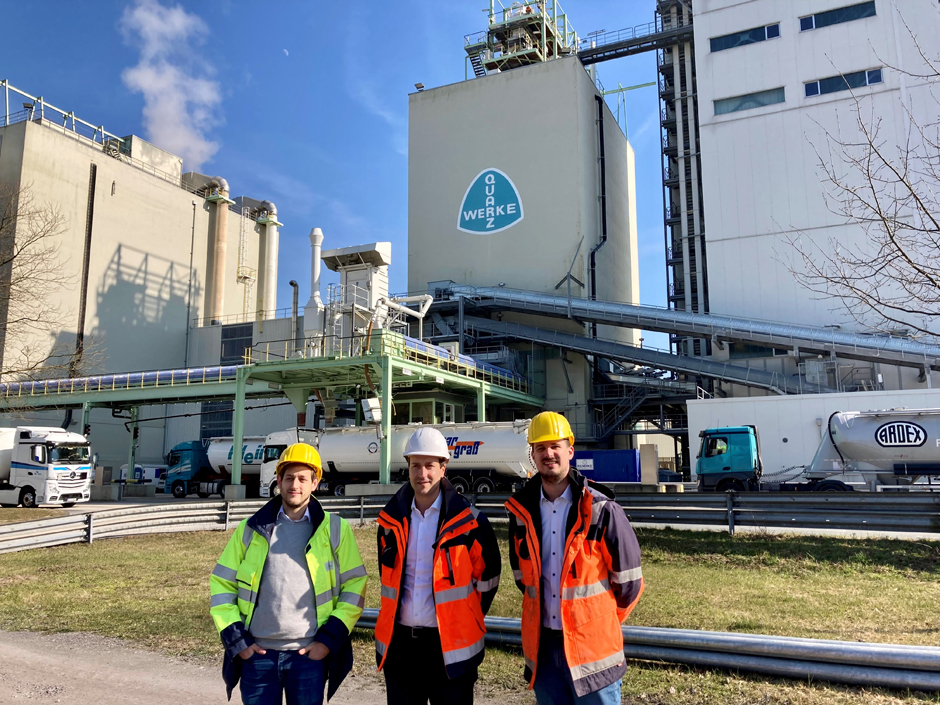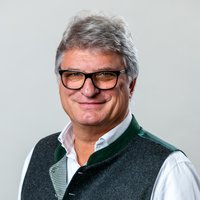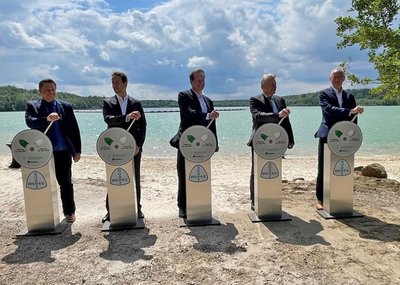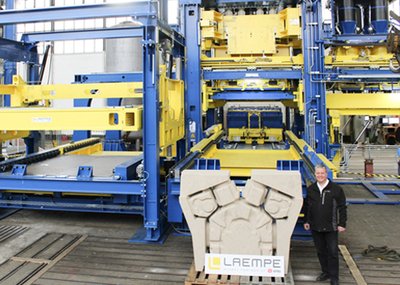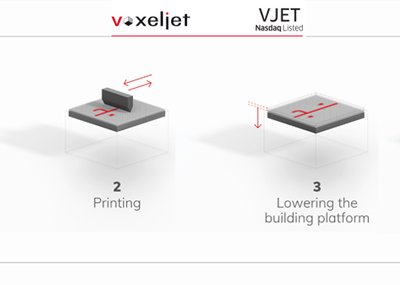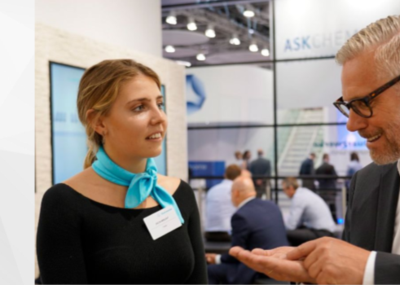There are those succinct phrases about things that are plentiful, like "sand by the sea".
In our on-site report, we stop at the Quarzwerke Group in Haltern in Münsterland in the German state of North Rhine-Westphalia. The Haltern plant belongs to the Quarzwerke Group, which has its headquarters in Frechen near Cologne and has been active worldwide in the extraction, processing and refinement of the industrial minerals silica sand, kaolin and feldspar since 1884. Haltern's silica sand enjoys a particularly high reputation for use in local and international foundries and in the manufacture of glass.
As our friendly hosts, the engineers Daniel Duric (Plant Manager), Maximilian Schratz and Markus Schramm, enthusiastically informed us, Haltern is one of the most important and efficient sites for quarrying quartz sand in Europe with an annual production of about 2 million tons. About 1 million tons of this goes to German foundries as dry special sand. Moreover silica sand from Haltern also goes to European foundries and via oversea shipping container to destinations in India, Turkey and China.
What makes the silica sand from Haltern so unique?
The silica sand from the Haltern area are deposits from the upper Cretaceous period (Santon) and are about 85 million years old. The high degree of whiteness and purity is due to bleaching processes caused by humic acid waters. Haltern sand consists of over 99,8% SiO2.
In addition to its purity, the sand from Haltern has ideal primary characteristics; round grains with the best surface structure are excellently suited for use in the foundry as a base material for moulds and cores, which must be both very strong and gas-permeable in combination with binders.
During the process of hydro-classification, the grain sizes are sorted into firmly defined grades with coarse, medium and fine grain sizes due to the different sinking speeds.
In the meantime, Haltern has a product range from H31 to H35 and since the commissioning of the first screening tower in 2013, which was followed by a second screening tower in 2021, the dried silica sand grades can now also be optimally adapted to individual customer requirements.
This is also confirmed by Key Account Manager Maximilian Schratz, who particularly appreciates the variety of possible applications and the cooperation with customers.
Silica sand extraction - How does the sand get to the foundry?
At the Haltern am See site, the sand is extracted with the help of dredgers. The ships "Münsterland" and "Sythen" fetch, or rather suck, the sand from up to 40 m deep in the Silver Lake. Via two pipelines about seven kilometers long, the sand-water mixture is now pumped into a storage pond at the plant. At the plant, the sand is washed and divided into different base grades with the help of the hydro-classification process. The foundry sand is later dried and further separated into individual fractions in the screening tower, where it is then assembled according to customer requirements.
65% of the sand is then transported to the customer by truck and 35% by rail.
Sand quality makes the difference -The grain size distribution determines the properties of the core production
In companies that produce sand moulds, pure and highly heat-resistant silica sand is a basic requirement for subsequent quality production.
As the foundry industry develops into a high-tech industry to meet customer requirements as well as environmental and social standards, the quality requirements for foundry sand are increasing.
Sand from Haltern is used for the production of casting moulds in aluminium, iron and steel foundries because of its excellent casting properties. In addition, it has been used for decades as a reference sand for research and development in foundry chemistry.
As already mentioned, the raw material is particularly favourable in Haltern. The edge-rounded grain shape and the smooth grain surface enable extreme strengths levels of mould cores. The high bending strength enables the ecologically valuable reduction of binder while maintaining the highest quality as well as less waste and good reclaimability.
The meticulous processing of the sand also gives the customer a fixed benchmark for his quality standards regarding the grain size. With processing on two screening towers, Quarzwerke in Haltern is able to reduce quality fluctuations to ±4%.
This gives customers the greatest possible quality consistency for standard products from H31 to H35, but also enables the production of individual grain size distributions up on customer’s request.
Blends of different grain sizes are offered, which can be put together according to bending strength or gas permeability requirements by the customer. Of course, they also get support in Haltern from their own sand laboratory in Frechen and in the manifold cooperation with the experts for foundry chemistry.
This kind of cooperation also applies to the production of printed cores. For this purpose, Quarzwerke Group is in exchange with the leading manufacturers of 3D sand printers and develops special certified grades for this type of core production.
Conclusion - Outlook - Climate-neutral production
You have to experience a silica sand factory like this in operation. It is breathtaking what process an 85 million year old grain of sand goes through to end up in a mould.
The effort that must be put into it is considerable and the technology is impressive.
The plant in Haltern will continue to mine sand for decades to come, and it will do so in harmony with the environment as well as the demands of the industry.
Sand production is of course energy-intensive, as energy specialist Markus Schramm reports. As the head of Energy Management and CO2-Optimization, he has exciting tasks ahead of him.
At the moment, the largest floating PV plant in Germany is being built on one of the former quarry lakes. Foundry-Planet will report on this project, which is scheduled for completion at the end of April 2022.
We thank you for the hospitality in Haltern - Glückauf!

